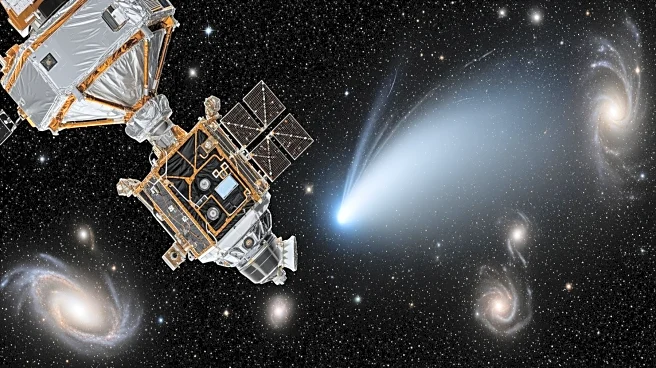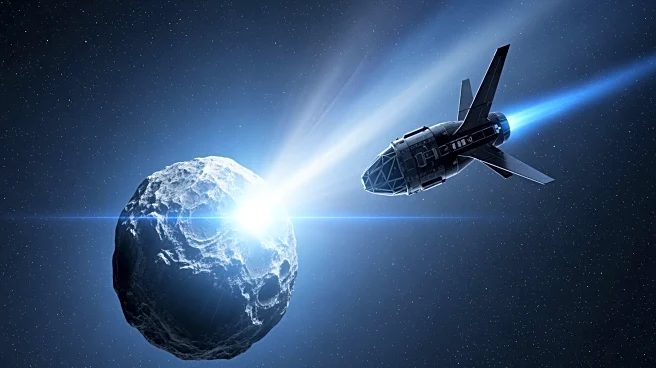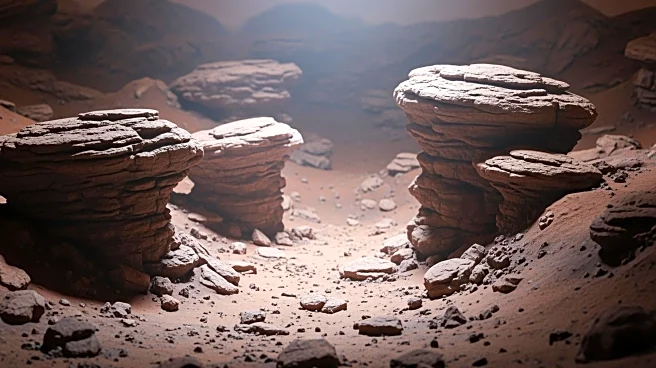What's Happening?
Researchers from the University of Western Australia have analyzed 3.7-billion-year-old feldspar crystals from Western Australia, uncovering chemical fingerprints that offer clues about the moon's formation.
These ancient rocks, known as magmatic anorthosites, are rare on Earth but common on the moon, suggesting a connection between the two. The study supports the 'giant impact' theory, where a Mars-sized object collided with early Earth, leading to the moon's creation. The isotopic signatures from these rocks resemble those found in lunar samples from NASA's Apollo missions.
Why It's Important?
This discovery provides valuable evidence supporting the theory of the moon's formation through a massive impact event. Understanding the chemical composition of Earth's oldest rocks helps scientists reconstruct the planet's early history and the processes that led to the moon's creation. The findings have implications for planetary science, offering insights into the dynamics of celestial collisions and their role in shaping planetary bodies. This research enhances our understanding of Earth's geological history and the formation of its satellite.
What's Next?
The research team plans to continue analyzing ancient rocks to further explore Earth's early crustal development and its connection to the moon. Future studies may focus on identifying more isotopic signatures that link Earth's geological history with lunar samples. The findings could lead to new theories about planetary formation and the evolution of celestial bodies. Researchers aim to expand their investigations to other ancient rock formations, potentially uncovering more evidence of early Earth-moon interactions.
Beyond the Headlines
The study of ancient rocks not only sheds light on the moon's formation but also raises questions about the preservation of geological history and the ethical considerations of studying rare minerals. The research highlights the importance of protecting Earth's oldest geological formations, which serve as natural archives of planetary history. It invites discussions on the cultural significance of these rocks and their role in understanding Earth's place in the solar system.











